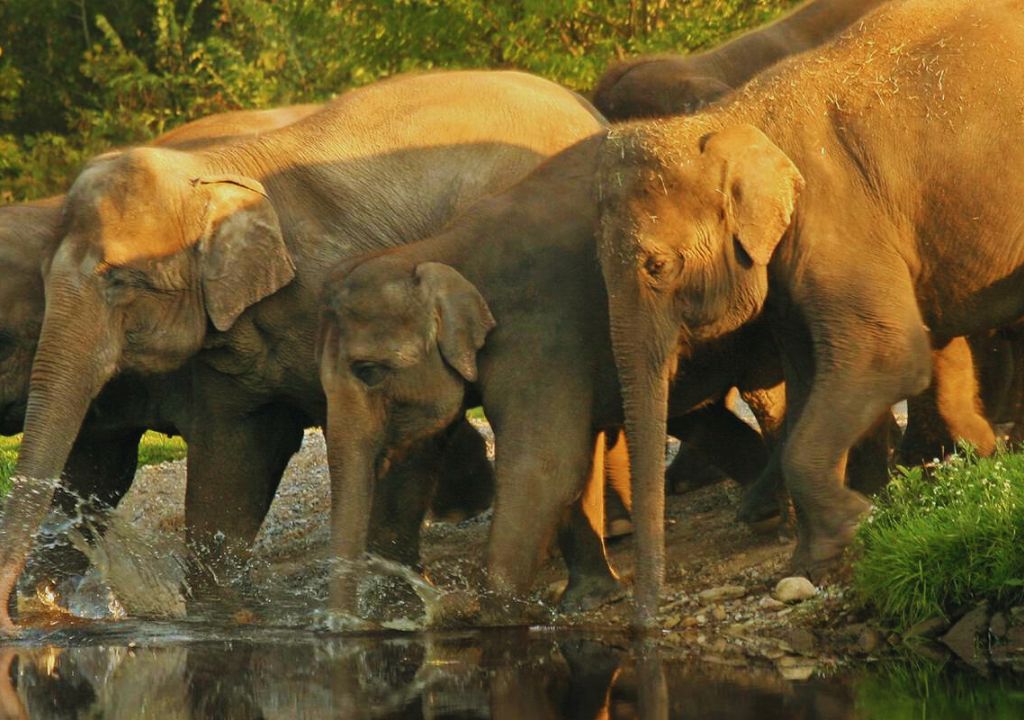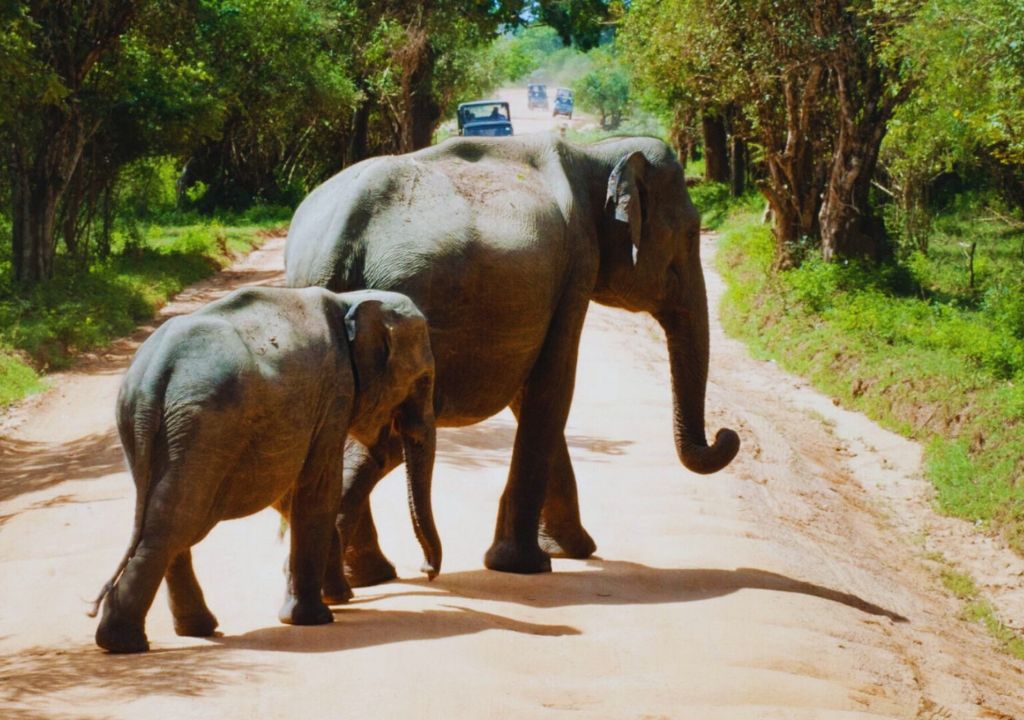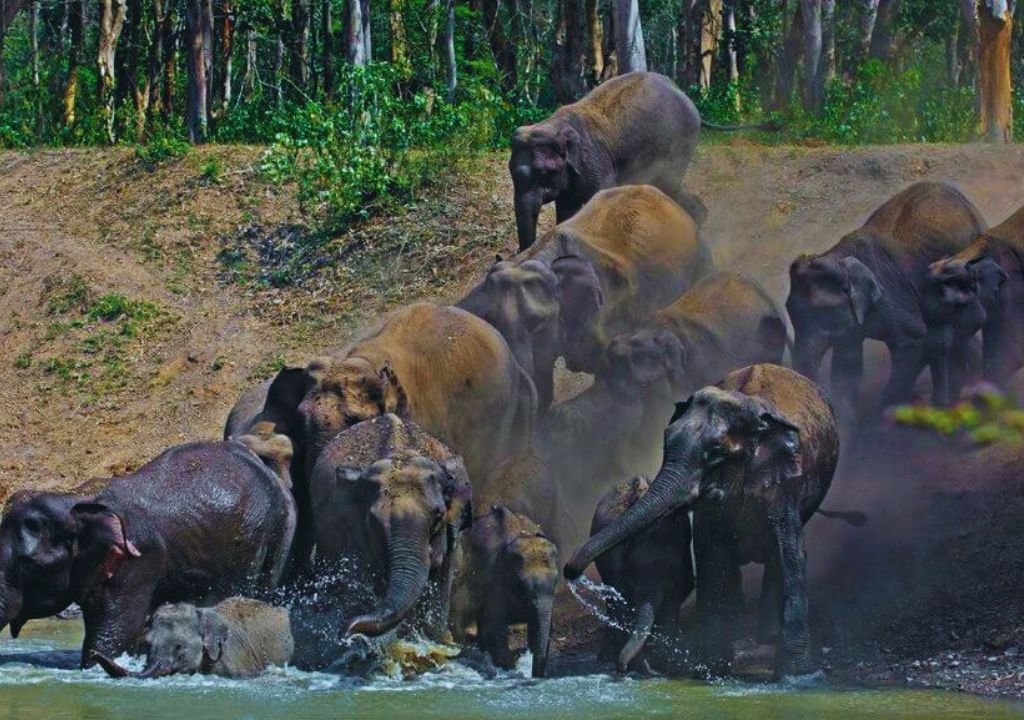Rajaji National Park, a pristine wilderness nestled in the heart of Uttarakhand, India, stands as a testament to the marvels of nature’s biodiversity. Amidst the myriad of creatures that call this park home, one majestic giant reigns supreme: the elephant. In this article, we delve into the enthralling world of elephants within the realm of Rajaji National Park, exploring their behaviors, challenges, conservation efforts, and the delicate balance they maintain with their human neighbors.
Rajaji Tiger Reserve is renowned for its dual status as both a national park and a tiger reserve, and it is particularly acclaimed for being a thriving elephant habitat, with approximately 600 elephants calling Rajaji home.
Historical Significance
Elephants have held a venerable place in Indian culture and tradition, revered as symbols of strength and wisdom. This reverence echoes within the expanse of Rajaji National Park, which shares a historical bond with these magnificent creatures. The park’s rich history intertwines with that of elephants, forming a tapestry that stretches back through the ages.

Elephant Behavior and Habits
Within the lush confines of Rajaji National Park, elephants form intricate social structures resembling a close-knit community. These gentle giants traverse the landscape in family units, engaging in a complex web of interactions that mirror human society in surprising ways. Their feeding patterns and habitat preferences shape the environment, while migratory journeys evoke a sense of wonder as they navigate seasonal changes.
Conservation Challenges and Efforts
Yet, as with many awe-inspiring stories, there are challenges that cast shadows on this vibrant narrative. Human-wildlife conflict simmers, with elephants often finding themselves at odds with burgeoning human populations. Poaching and habitat loss further threaten their existence. Rajaji National Park has become a battleground where the forces of conservation clash with these threats.

Mitigating Human-Elephant Conflict
In the face of these challenges, ingenious methods emerge to bridge the gap between humans and elephants. The concept of elephant corridors comes to the forefront—a network of pathways that enable safe passage for elephants, reducing potential clashes. This innovative approach embodies the harmonious coexistence Rajaji National Park seeks to foster.
A Sanctuary for Observation
For the intrepid traveler, Rajaji National Park offers a sanctuary where humans can witness these awe-inspiring creatures in their natural habitat. Responsible tourism practices ensure minimal disruption, allowing visitors to engage in a deeply enriching experience while contributing to the preservation of this fragile ecosystem.

Research and the Future
The realm of elephant conservation finds itself illuminated by modern technology and dedicated research initiatives. Tracking collars and advanced monitoring techniques provide insights into the lives of elephants, shedding light on their movements, habits, and needs. As we journey forward, the data gleaned from these efforts becomes a guiding star in the constellation of elephant conservation.
A Harmonious Haven
Rajaji National Park emerges as a harmonious haven, showcasing the potential for peaceful coexistence between humans and elephants. The strategies employed here, from community-based conservation to education, paint a vivid portrait of hope for the future—a future where elephants continue to roam amidst the embrace of a caring community.
Future Vistas
Looking ahead, the path to elephant conservation extends beyond horizons. The legacy of Rajaji National Park’s endeavors casts ripples across the expanse of time, encouraging us to envision a world where humans and elephants walk hand in trunk. Education and awareness stand as key pillars, guiding us toward an era where elephants thrive, and their thunderous presence echoes through generations.
Conclusion
Rajaji National Park stands as a sanctuary of wonder, where elephants weave their tales amidst the rustling leaves and flowing streams. As we peel back the layers of their existence, we find a narrative that resonates with our deepest instincts—a story of harmony, resilience, and the unbreakable bond between humans and nature.
FAQs About Elephants of Rajaji National Park
1. Why are elephants important to Rajaji National Park’s ecosystem?
Elephants maintain biodiversity, disperse seeds, and shape vegetation, contributing to the park’s ecological balance.
2. How does Rajaji National Park mitigate human-elephant conflicts?
The park uses elephant corridors, community engagement, and education to reduce conflicts and promote coexistence.
3. What is the significance of elephant corridors?
Elephant corridors provide safe routes for elephants, enabling movement, gene flow, and access to resources across fragmented landscapes.
4. What role does responsible tourism play in elephant conservation?
Responsible tourism supports conservation efforts financially, while guidelines ensure minimal disruption to elephants and their behavior.
5. How does technology aid in the study of elephant behavior?
Tracking collars with GPS help monitor elephant movements, providing insights into behavior, social interactions, and habitat preferences.
